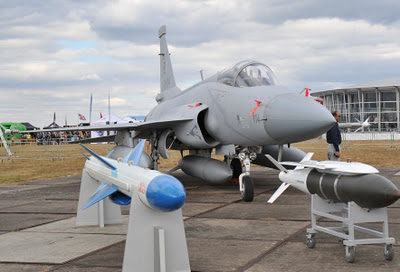Defense
Secretary Voltaire Gazmin said the team will look for aircraft, vessels
and even armored vehicles that could be acquired by the military for
both of its external defense and internal security operations.
Over the weekend, Gazmin said the department will be acquiring weapons and assets for the Armed Forces amounting to P70 billion.
The budget for the acquisition will be spread up to 2020 or even beyond the term of the current administration.
Since
the massive procurement could not be financed by the government in just
one release, the defense chief said the acquisition will be done
through a Multi-Year Obligation Agreement (MYOA) from Congress.
Adoption
of the MYOA was first proposed during the term of Defense Secretary
Gilberto Teodoro as a scheme in financing the military’s capability
upgrade program, and which was implemented during the term of Defense
Secretary Norberto Gonzales in 2010.
In fact, a contract
for the delivery of a multirole vessel from South Korea was sealed by
Gonzales under the same scheme. Payment of installments for the warship
began last year.
Gazmin said that aside from the US, which
is the country’s principal sources of assets and equipment for the
military’s capability upgrade, the defense department is also looking at
Italy, Spain, France, United Kingdom and South Korea as possible
sources of assets.
From Italy, the defense chief said the
same team will also visit Spain for the same purpose, and both trips
will be taking this week.
“We will see the best we can get for the funds available, that will be the first priority,” Gazmin said.
He said the assessment, inspection and possibly even acquisitions should be done at least by July this year.
“It
should be finished by July, or worse case scenario, by November. But by
July, we should have attained at least 50 percent, that is already a
good batting average,” Gazmin said.
He said the government
is looking to acquire armored vehicles; aircraft, including long range
patrol aircraft and fighter jets that include the F-16 from the US;
multirole vessels; missile-armed ships; anti-submarine vessels and
radars.
Gazmin said the interdiction capability of the
military will be useless if it will not have enforcement weapons such as
fighter jets and ships with guided missiles.
The big
ticket procurements were necessary to defend the country’s territory and
discourage intrusions into its maritime domain, particularly by China.
Gazmin
said the modern weapons and assets are also necessary in so that the
country is able to put up a credible force and protect its territory in
the disputed Spratlys.
Meanwhile, two US Navy ships are in the country for routine port calls.
The
guided-missile destroyer USS Wayne E. Meyer (DDG-108) docked at the
Manila Bay while the USS Chafee (DDG-90) dropped anchor in Cebu.
“USS
Wayne E. Meyer and USS Chafee are here to engage with their
counterparts in the Armed Forces of the Philippines and perform
Community Relations Projects, as well as allowing the crew an
opportunity for rest and relaxation,” the US Embassy in Manila said in a
statement.
“These goodwill visits highlight the strong
historic, community, and military connections between the United States
and the Republic of the Philippines,” the statement added.
At
the same time, at least three retired military officials have been
hired by the various agencies of the Department of National Defense as
consultants, primarily to help in the procurement of assets and
equipment for the military.
Peter Paul Galvez, DND
spokesman said, the three retired officers, were hired to help the
department in its defense acquisition system for the Armed Forces.
They
are retired Lt. Gen. Willie Florendo from the Air Force, Vice Adm.
Luisito Fernandez from the Navy and Gen. Victor Ibrado, former Armed
Forces chief of staff.
“Their functions are to give advise
on the perspective of the modernization. At least, they have the
experience although they are already outside the Armed Forces,” Galvez
said.

















































